Challenger v Criterium
It’s 1976, and you’ve just bought yourself a new French bike. Not an expensive one, mind you, as inflation is at a whopping 16% in Britain. You opted for the mid-range bike, something like the Motobecane C3, and shining on your brand new bike is a set of Huret Challenger or Simplex Criterium derailleurs. Like hundreds of thousands of bikes sold that year and indeed throughout the 1970’s, Huret and Simplex were the derailleur of choice for most French manufacturers. Though competition was ramping up from Japan, ( many of the 1976 Motobecane road bikes sold in the USA had Suntour gears ), Huret and Simplex still enjoyed a large of piece of the pie.
First Impressions
What stands out at first when you see these two derailleur / shifter sets? Well, it has to be the plastic. By 1976, Simplex were deep into Delrin mode and nearly all of their derailleurs were now built with plastic. Huret, on the other hand, had stuck with plain metal finishing and functional-looking components in this price range. i mean, just look at those ugly and cheap-looking Challenger shifters. At least the Simplex rear mechanism has the classic form of the SLJ derailleurs, a beautiful design and enduring work of mechanical art. Neverthless, the Delrin elements undermine the Criterium set. In 1975, were people convinced of this newfangled form of material? I don’t know, but here are my ratings of each component, purely on its aesthetics:
Front Derailleur Rear Derailleur Shifters
Huret Challenger 8/10, Huret Challenger 6/10 Huret Challenger 6/10
Simplex Criterium 6/10 Simplex Criterium 8/10 Simplex Criterium 7/10
Comparing Weights
Below is another table comparing the weights of each respective component. We can see that Simplex edges it in this case by just 46 grams. In real terms, this would mean nothing on the road, but it is interesting to see how the Challenger rear derailleur is lighter than the Delrin based Simplex Criterium. All that plastic didn’t mean it was any lighter than its metal rivals.
Front Derailleur Rear Derailleur Shifters
Huret Challenger 160g, Huret Challenger 208g Huret Challenger 148 g
Simplex Criterium 132g Simplex Criterium 232g Simplex Criterium 106g
Longevity
So many of the Simplex front derailleurs I have are cracked and broken, that they must get a grade E for durability. Indeed, all Simplex derailleurs should be checked for damage, as there is the possibility of them coming off the frame while riding. Criterium rear derailleurs are less inclined to be cracked than their unfortunate front mechanisms, and I believe they retain their spring tension better than the Huret Challenger. In fact, both the Challenger and the Eco are two of the worst vintage derailleurs for loss of spring tension, so many of them suffer from slackness and are completely inoperative after years of use.
Functionality
The best component in these two sets of shifters and derailleurs is the Criterium rear derailleur. Yes, it has the plastic body and is a poor relative of the SJ and SX series of Simplex derailleurs, but it still shares their design, and though it lacks the rigid metal parallelogram plates and quality of the SJ, it was a reliable and dependable rear derailleur, efficient and precise. The Challenger, on the other hand, shares too much resemblance with the cheaper Eco and Allvit for my liking. It is a utilitarian mech, on the clumsy side when shifting, but it does have a feature that enables its owner to adjust for maximum cog size, either for 24 or 28 teeth cogs. Both the Criterium and Challenger could shift to a 28t cog, perhaps even a 30.
Conclusions
In 1975, both these sets of mechanisms worked well enough, but neither offered any real mechanical improvements over previous derailleurs. Within ten years, derailleurs from Japan would be making leaps and bounds in new technology, leaving the French firms behind and in decline. If you can find a set of either of these models in good condition, without cracks in their plastic and with good spring tension, you will probably enjoy reliable shifting on your ten speed for many years to come. Personally, I would opt for the Simplex Criterium, being based on the classic design of the SJ. And don’t overlook the fact that the shifters were padded for comfort!


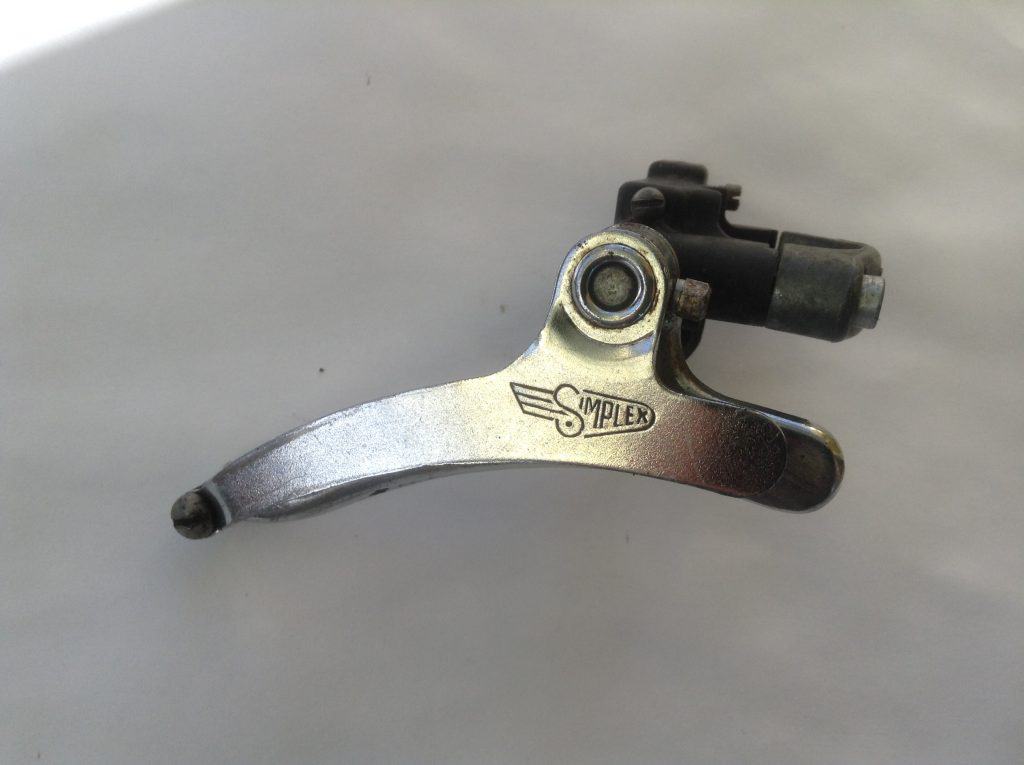
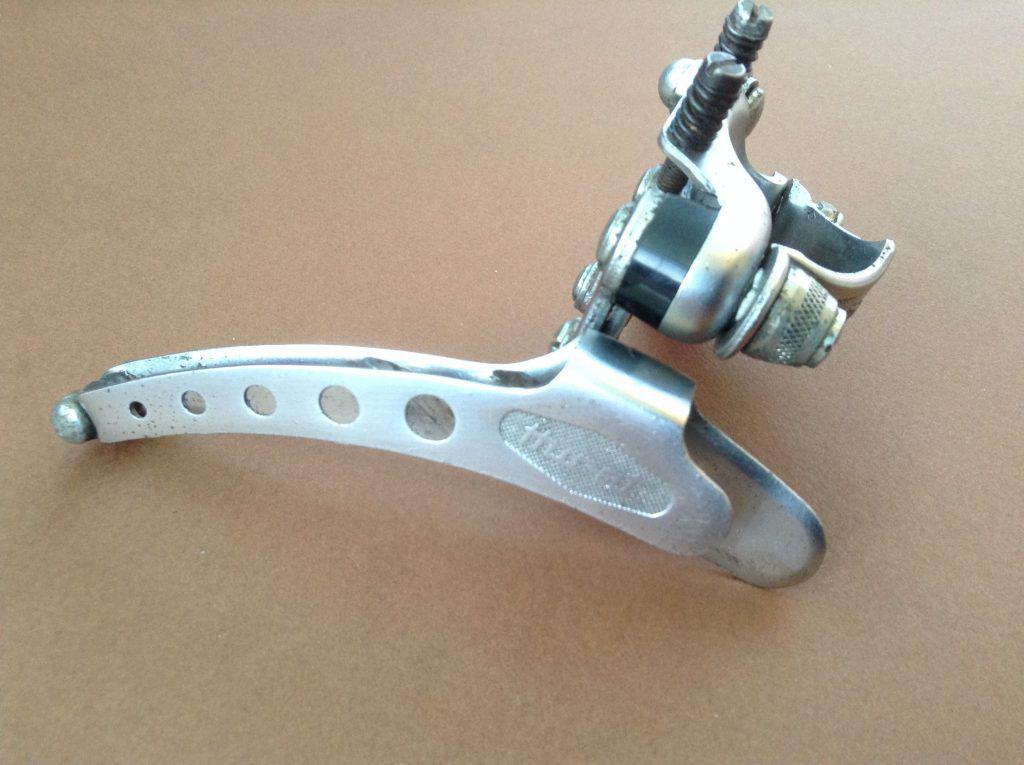
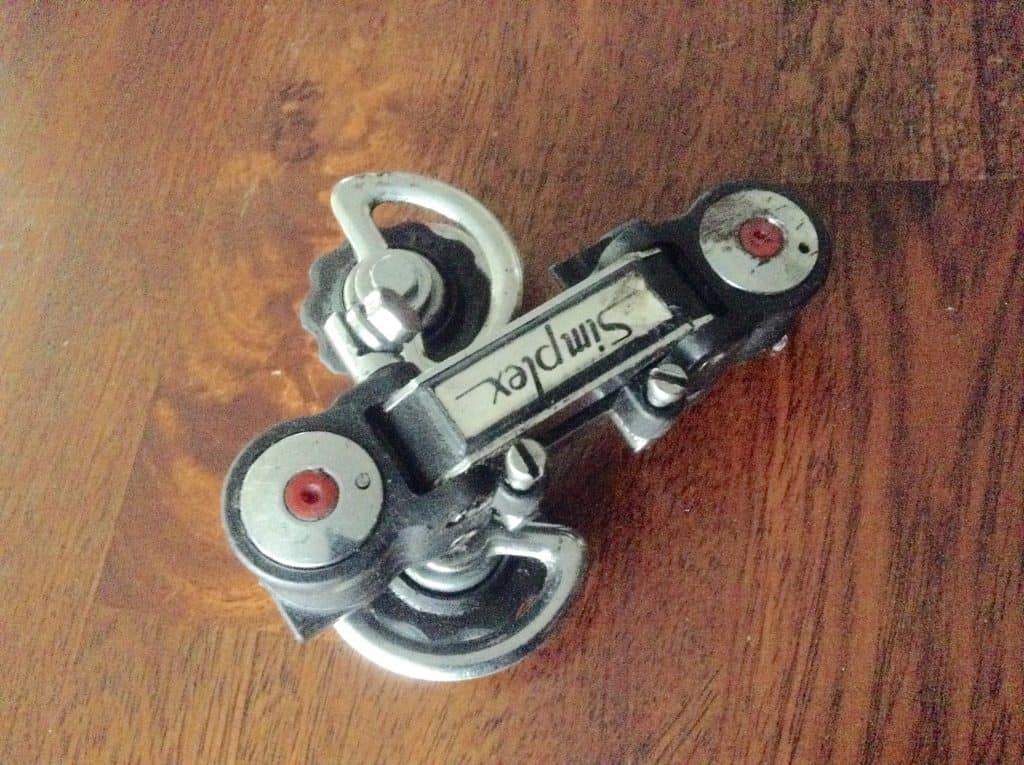
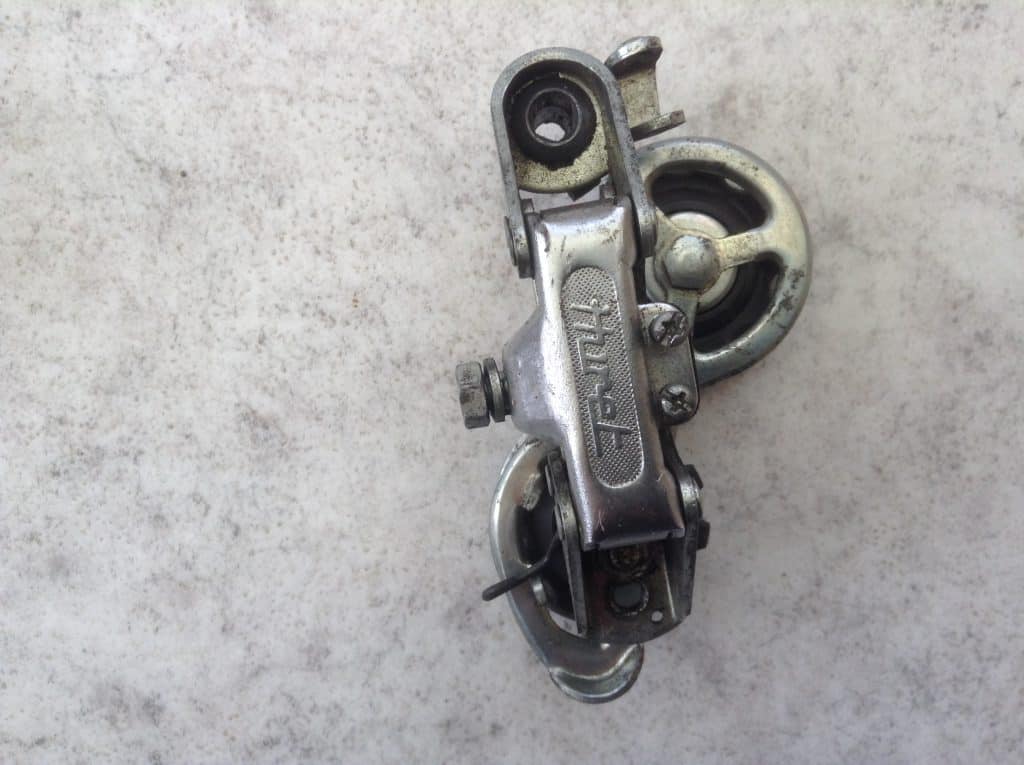
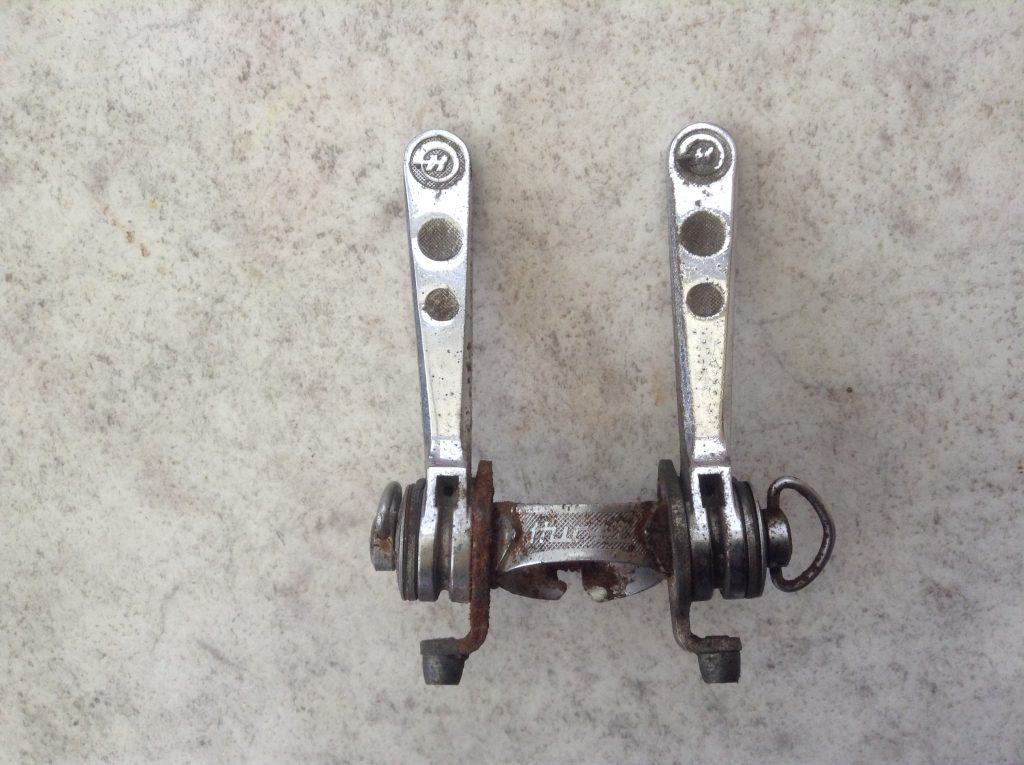
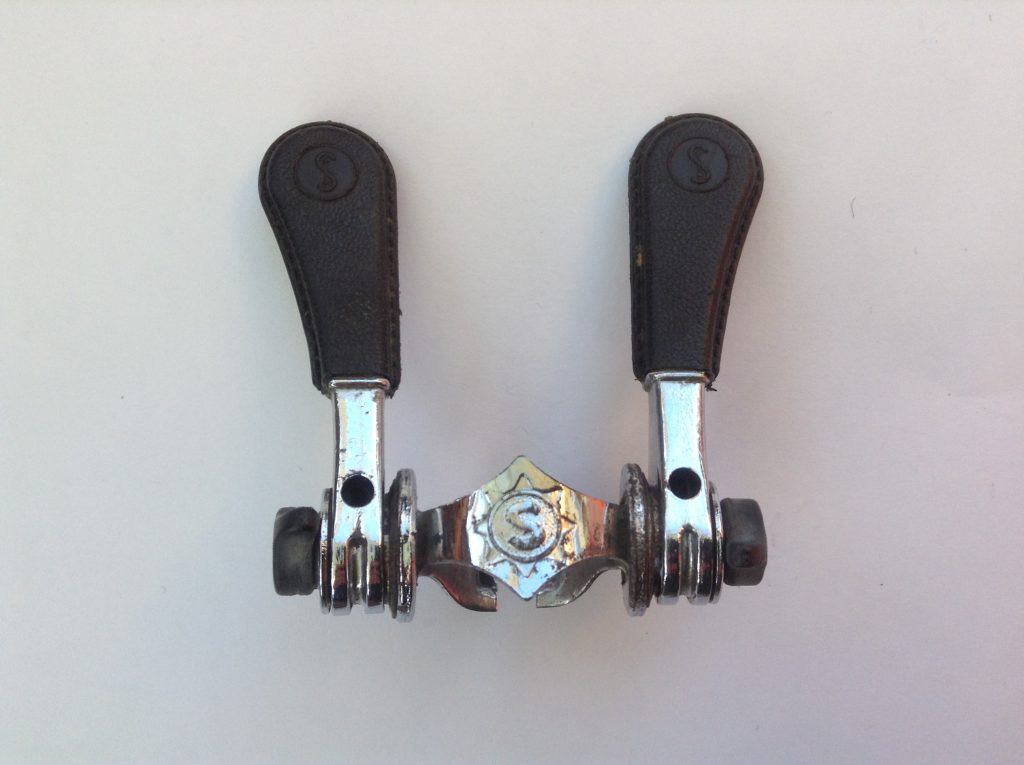
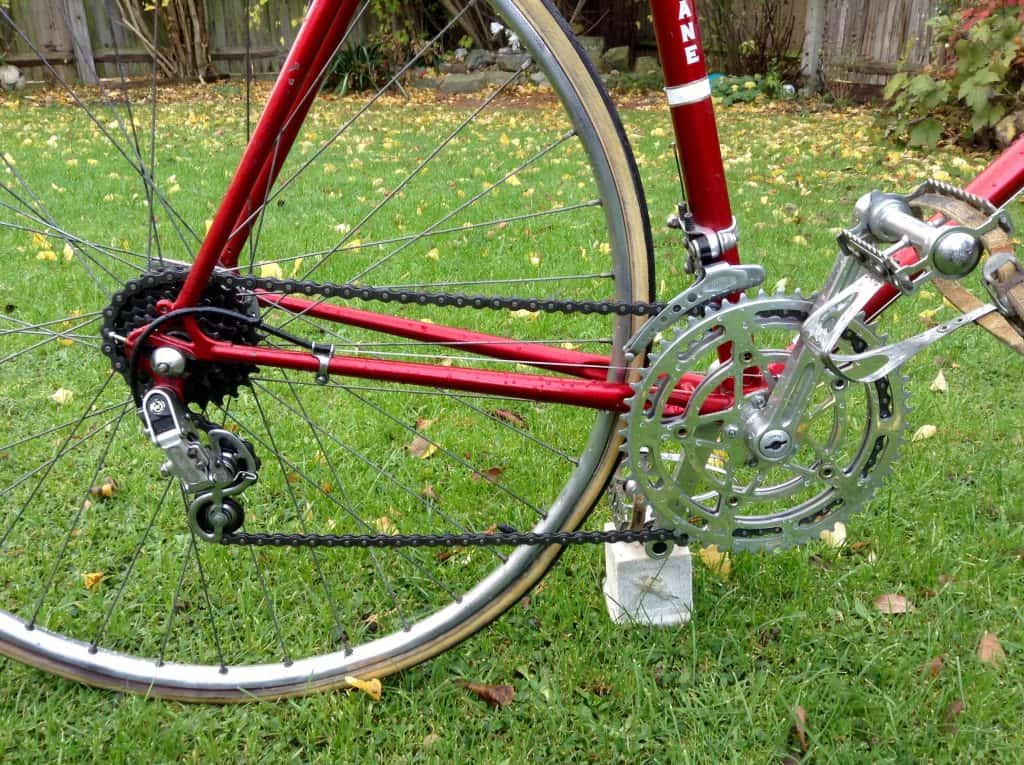
I put a Huret Allvit on my Mercier 300 many years ago, it was an improvement (function, not grams) over the original Simplex plastic rear. I now have a Campy Nuovo Record rear d, very smooth with the original Simplex friction shifters on the down tube.